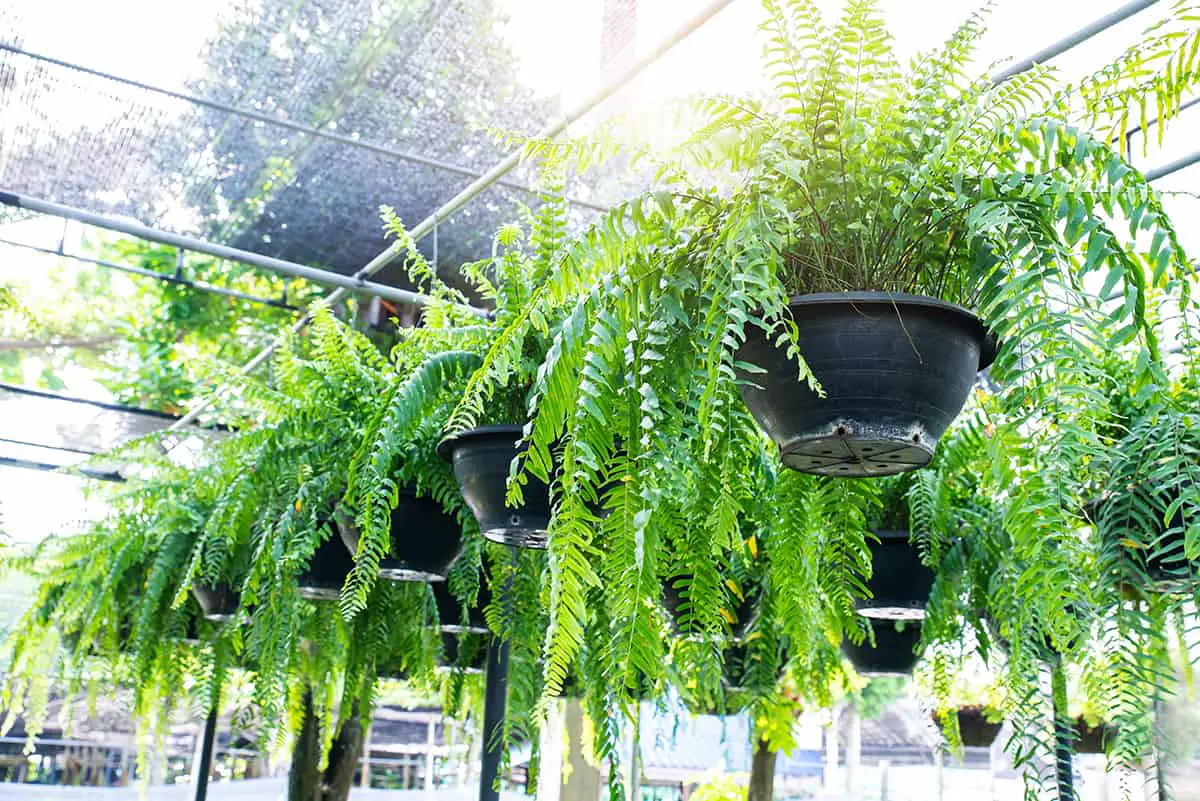Ferns are famed for thriving in damp and dark woodland areas, giving gardeners the ability to brighten up shady spots with lush green foliage.
However, there are a number of ferns that will not only tolerate but actually flourish in full sun conditions, which we will explore below.
Table of Contents
Can Ferns Grow in Pots?
Ferns are widely cultivated in the shady spots of soil beneath larger plants and trees, but they are actually very well suited to growing in pots. This is because ferns have shallow root systems, so a container is not going to restrict their roots in any way.
Can Ferns Grow in Full Sun?
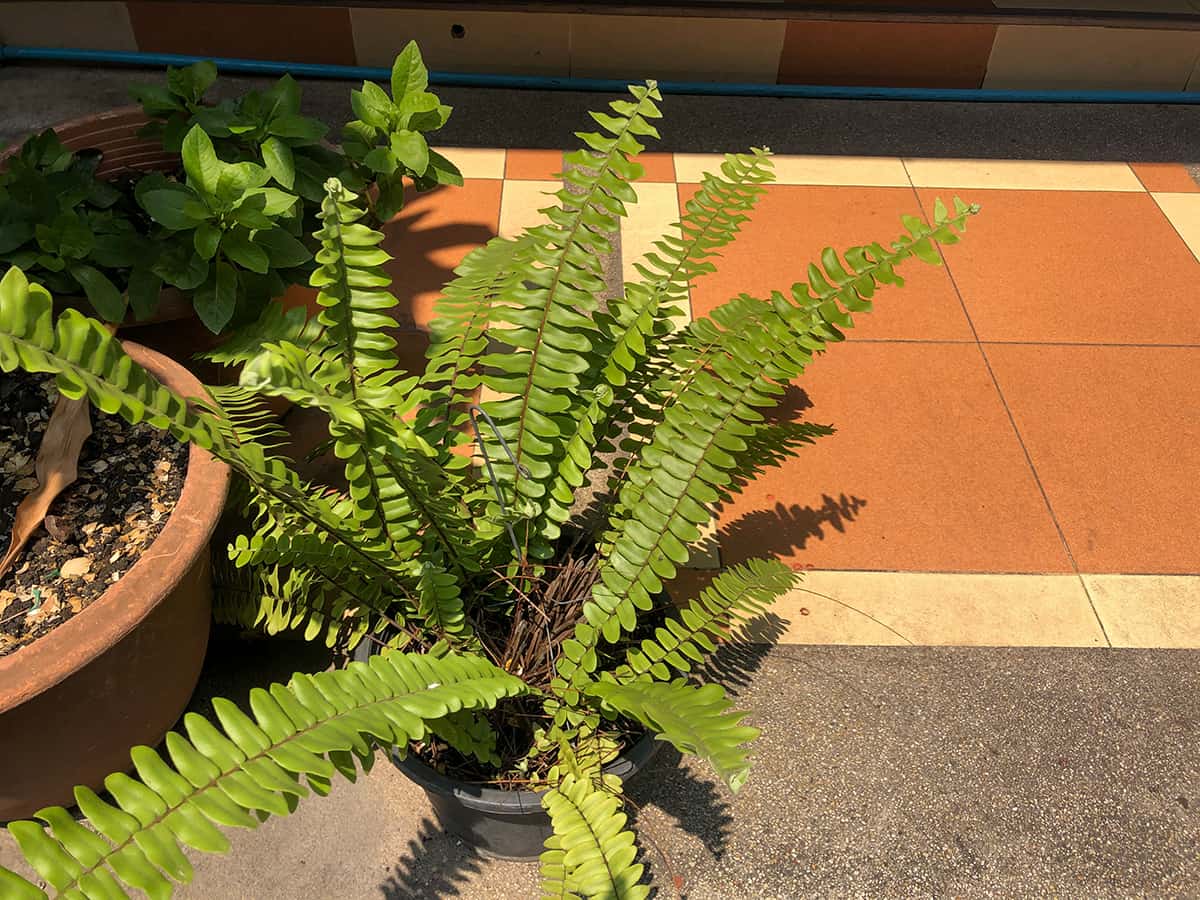
Most ferns prefer to grow in full or partial shade, but there are some which enjoy exposure to full sun.
Typically, when a fern is planted in full sun, it will have higher water needs, so this is something to bear in mind when planting ferns in pots because container soil tends to dry out more quickly than ground soil.
Full Sun Ferns for Containers
Cinnamon Fern
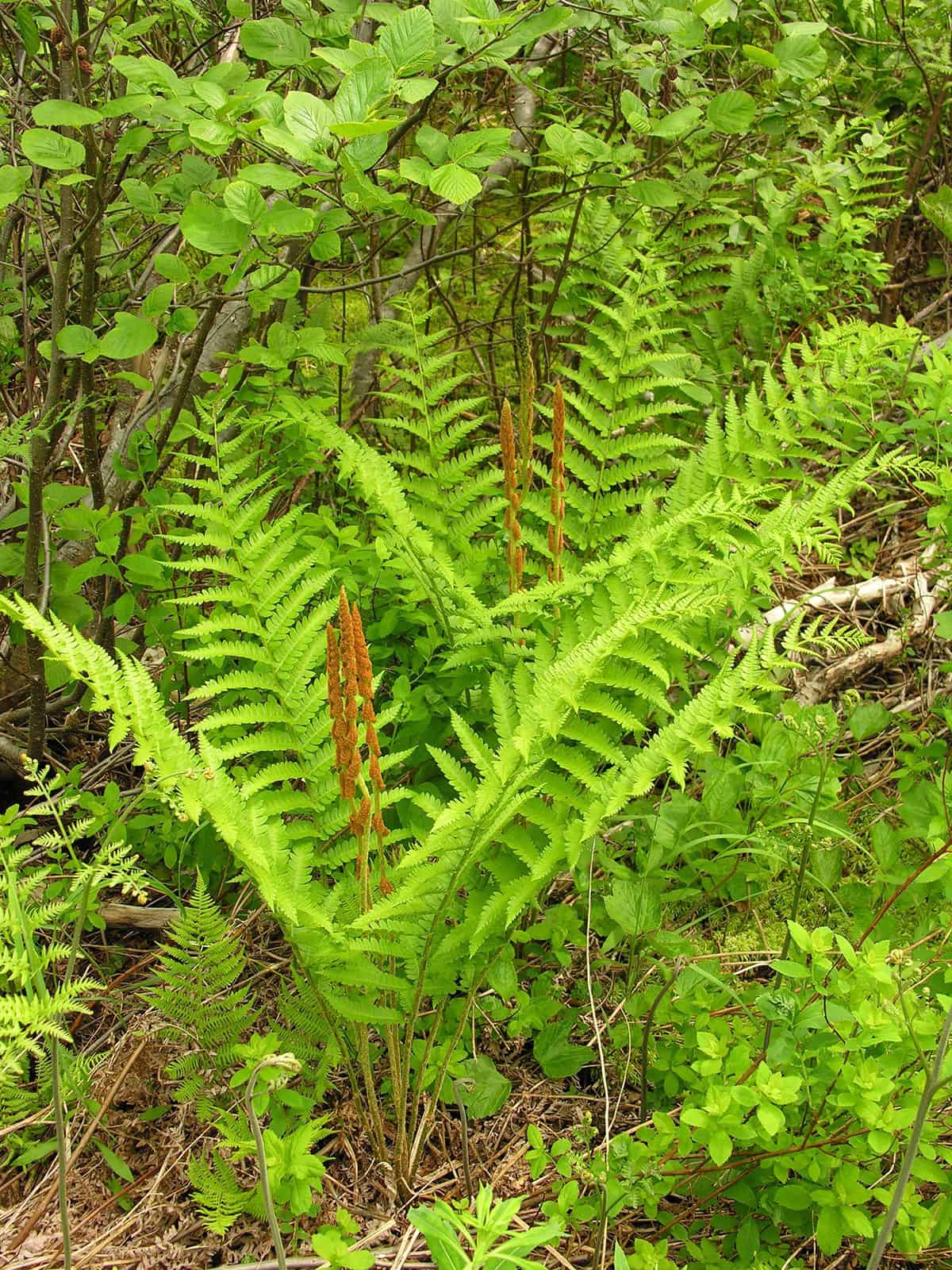
- Botanical name: Osmunda cinnamomea
- Common names: Cinnamon Fern
- Plant family: Osmundaceae
- USDA hardiness zone: 4 – 10
- Mature height: Up to 5 feet
- Mature spread: Up to 3 feet
This fern is native to the Americas, where it is accustomed to growing in a wide range of climates and conditions. The plant gets its name from the spore-producing spikes it sends up from the middle of the plant; these are a rusty orange-brown color and bear a close resemblance to cinnamon sticks.
The lush foliage of this plant takes a broadly triangular shape, with lacy, feathered fronds fanning out in a loose vase-like habit. As a deciduous plant, the Cinnamon Fern makes a striking focal point in the landscape from spring through to fall. It is small to medium in size, usually growing to a maximum height of between 2 and 5 feet. The manageable size of this plant makes it ideal for growing in pots as long as you provide a continuous supply of moisture for the soil.
Unlike most ferns, the Cinnamon Fern prefers to be grown in a light, dappled shade, but it can also thrive in full sun. This plant will perform best in boggy or consistently moist soils, and the more sun they get, the more moisture they will need.
If you are growing the Cinnamon Fern in a position of all-day sun, it is advisable to grow the plant in standing water, for example, in a container at the edge of a pond or water feature. Alternatively, grow the plant in a pot that gets watered every day.
Interrupted Fern
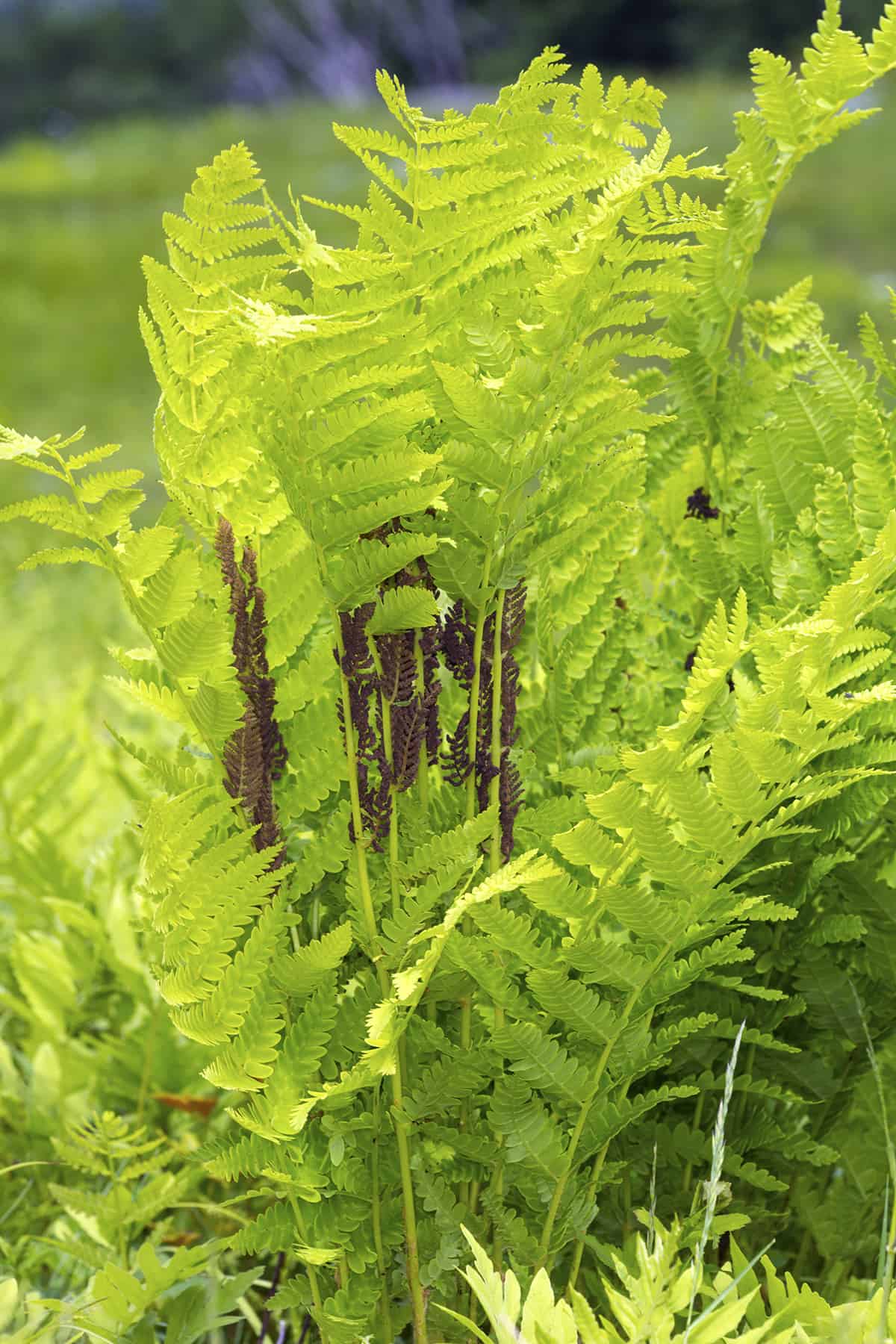
- Botanical name: Osmunda claytoniana
- Common names: Interrupted Fern
- Plant family: Osmundaceae
- USDA hardiness zone: 3 – 8
- Mature height: Up to 3 feet
- Mature spread: Up to 3 feet
The Interrupted Fern is quite hardy, making it a good choice of plant for cool and moderate climates. It is a deciduous plant, but it is among the first ferns to unfurl its foliage in late winter or early spring, providing the landscape with a long season of interest until the fronds die back in the fall.
The Interrupted Fern is quite showy, with divided, pinnate, bright green fronds which stand up vertically and gently arc outwards. At a maximum height and spread of just 3 feet, this plant is well suited to growing in a pot. Place it on a patio as a centerpiece, or layer it behind smaller potted plants for a textured look.
This fern will tolerate a wide range of lighting conditions, from full shade right through to full sun, making it incredibly adaptable. However, this fern is quite demanding when it comes to the moisture content of the soil. It should be grown in consistently damp, moist soil if kept in the shade, or when grown in the sun, it will need wet soil to thrive.
When grown in a container, set the Interrupted Fern with the pot’s base submerged in a pond, as this will allow moisture to be continually absorbed through the pot’s drainage hole. Alternatively, supply the pot with daily water to keep the soil constantly wet.
Lady Fern
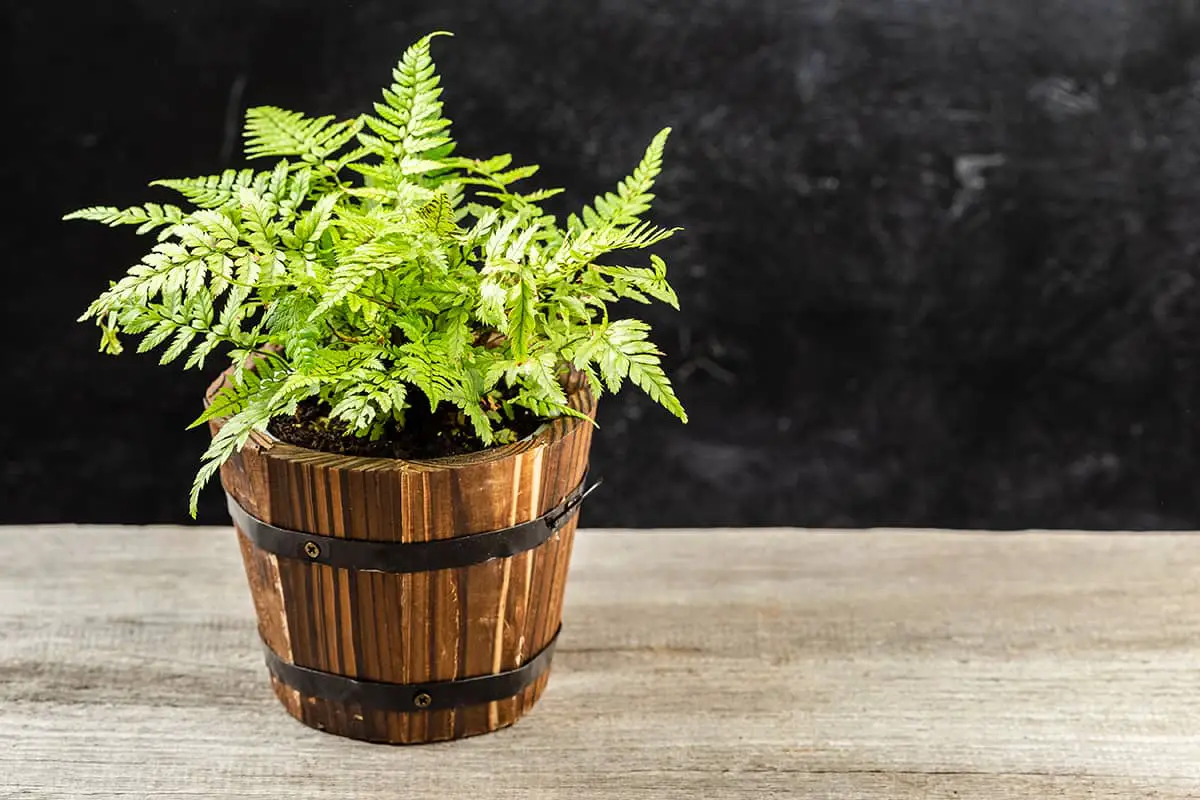
- Botanical name: Athyrium filix-femina
- Common names: Lady Fern, Common Lady Fern,
- Plant family: Athyriaceae
- USDA hardiness zone: 4 – 9
- Mature height: Up to 3 feet
- Mature spread: Up to 3 feet
The Lady Fern is an attractive, vigorous fern that produces lush rosettes of lacy green foliage, with fronds that fan outwards to create a casual, tropical style. The stems of the fronds are usually green, but sometimes they will take on a red hue for a two-tone look. As an extremely popular type of fern across the Americas and Western Europe, there has been a lot of cultivation of Lady Ferns, resulting in a number of different cultivars which possess various visual traits.
The ‘Ghost’ Lady Fern has silvery fronds with dark purple stems, while the ‘Painted’ Lady Fern has burgundy-colored foliage. Most Lady Ferns grow to a maximum height of between 1 and 3 feet, making them well-suited for keeping in pots. Although Lady Fern plants prefer partial to full-shaded conditions, they can also tolerate full sun in the right climates.
Cooler climates are best for this plant if you intend to keep it in full sun because exposure to excessive hot sun will cause the fronds to crisp and turn brown. When grown in full sun, it is important that the soil around this plant is kept consistently moist or wet.
Ostrich Fern
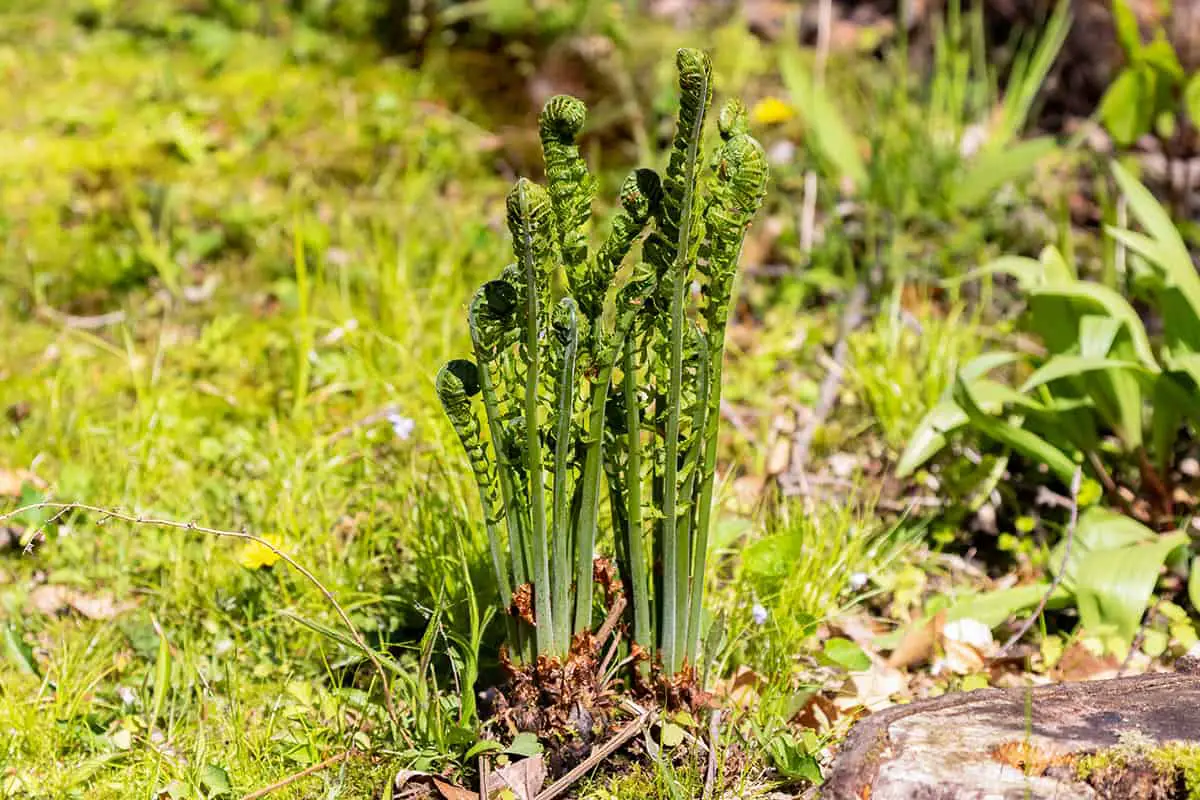
- Botanical name: Matteuccia struthiopteris
- Common names: Ostrich Fern, Ostrich Feather Fern, Shuttlecock Fern
- Plant family: Onocleaceae
- USDA hardiness zone: 3 – 7
- Mature height: 4 to 6 feet
- Mature spread: 3 to 4 feet
This is a deciduous fern, with long showy fronds resembling an ostrich’s large feathers. Each frond of this plant can span as much as 6 feet in length, with foliage extending upwards for an attractive architectural look. These plants work well for container-growing in large pots, creating an exclamation point in the landscape.
The tall, dense foliage of the Ostrich Fern means it can be put to good use as a privacy screen. Plant several Ostrich Ferns, each in their own pots, and line up the pots in a row around the edge of a terrace or patio to create shade or privacy. The Ostrich Fern grows best in consistently moist or wet and soggy soils.
It cannot tolerate humidity or dry soils. In some climates, this plant can be kept in full sun, most notably northern climates. In southern climates, the Ostrich Fern would need to be protected from midday sun and afternoon sun to prevent the foliage from scorching. Like most sun-tolerant ferns, the Ostrich Fern must be kept in consistently moist or wet soils when grown in a sunny spot.
Wavy Scaly Cloak Fern
- Botanical name: Astrolepis sinuata
- Common names: Wavy Scaly Cloak Fern, Wavy Cloak Fern
- Plant family: Pteridaceae
- USDA hardiness zone: 7 – 9
- Mature height: Up to 2 feet
- Mature spread: Up to 2 feet
The Wavy Scaly Cloak Fern is native to the southern United States and Mexico, where it is accustomed to growing in arid, bright conditions. As you would expect from the name, this plant produces wavy foliage, which has a thick, almost succulent-like texture. The leaves are gray-green on top and a rust-orange color on the undersides.
As a fairly low-growing plant, the Wavy Scaly Cloak Fern can make a good potted plant, both outdoors in warm climates or as a houseplant in a bright window. The fronds of this fern prefer to grow in full sun, however, the roots like to be kept shaded. This can be achieved with a layer of mulching over the top of the soil, which will also help to insulate the soil and prevent moisture loss.
Unlike most ferns, the Wavy Scaly Cloak Fern grows best in dry soils and is drought tolerant, making it a great choice for a low-maintenance container plant.
Hairy Lip Fern
- Botanical name: Myriopteris lanosa
- Common names: Hairy Lip Fern, Woolly Fern
- Plant family: Pteridaceae
- USDA hardiness zone: 5 – 8
- Mature height: Up to 2 feet
- Mature spread: Up to 2 feet
This is a deciduous fern that produces sprays of attractive green, lacy foliage. The plant is fairly drought-tolerant. However, a lack of moisture in the soil will make the leaves curl up, but they will return to their previous state when adequate water is supplied. The Hairy Lip Fern is named after the hairs which coat the fronds of the plant, giving it a soft and fuzzy look.
As a small to medium-sized plant, this fern grows well in containers, and it will also thrive in rock gardens and crevices in walls. It tolerates a wide range of lighting exposure, from full sun to partial shade. The Hairy Lip Fern will have higher water needs when kept in full sun.
